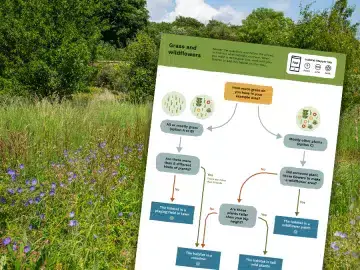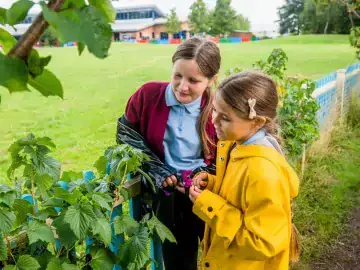
3D Model making
This activity encourages children and young people to observe the different spaces and features of their education setting, as well as giving them the opportunity to share their opinions and experiences of their learning site. Using natural materials (or craft materials) to create a ‘3D map’, learners are challenged to think about how they can represent different features and spaces, thinking about appearance, scale and distance. The activity ends in a ‘tour’ style presentation of their models to share their creations and how they experience their learning site. Early years learners can use recycled materials for ‘junk modelling’, or play dough to create models of their space.
This activity works best if delivered outside, gathering and using natural materials from the learning site – but, if necessary, it could be facilitated in the classroom using craft materials or recycled materials.
Preparation
What you need
- Plain paper
- Pencils
- Clipboards
- Natural materials in your school grounds, or craft/recycled materials
Location
- Outdoors or inside
Useful guidance
Step by step
- In small groups, ask learners to take 10 minutes to explore their learning site and to notice and familiarise themselves with the space. If you like, ask them to make a sketch of their site as they walk around, paying attention to: Which areas you use and how you use them, how you would get from one place to another, what you call each area.
- After 10 minutes, bring groups back together to quickly share what they have noticed. Ask each group to focus on an area in their learning site to make their model – is it an area that is interesting to them? What is it used for? Do they use it a lot, or not? What memories or stories do they have from this space? What features does it have? What do they like or dislike about this space?
- If delivering this activity outdoors, ask learners to, in their groups, gather materials from the learning site to make their models (sticks and twigs, leaves, stones, pinecones, etc). Encourage learners to try and include all the important features of the space, and think about how they will use different materials to represent them. (If delivering the activity indoors, use a selection of craft or model making materials, or recycled materials – get creative!)
- Note: Remind learners to only use fallen natural materials from the ground, and not to pick any leaves or plants, or break branches from trees! This activity can provide an opportunity to encourage respect and empathy for the nature around them.
- After 30-40 mins, bring groups back together. Ask each group to conduct a ‘tour’ to present the model they’ve created for the rest of the class. Ask each group to share what they have observed and modelled. How do they use different parts of the learning site? What is important to them about it? What stories can they tell?
Reflection
Based on their models and what they’ve decided to feature, ask learners, “If you were to change one thing about your outdoor space to improve it, what would it be?” Collect your group’s answers to begin to form ideas about what improvements you could plan together. You could try the Write a vision statement and Write a poem activities afterwards to help guide the choices you make together. Ideas for improvement can then encourage thought about what interventions and actions may be best suited for your site.
Curriculum links
This activity can be used to support curriculum knowledge and skill development in geography and design and technology, alongside enhancing nature education, with age appropriate adaptations.
What to try next

Mapping your site
Begin activity
Using overlays
Begin activity
X marks the spot
Begin activityThumbnail image: © RHS, Credit: RHS / Matt Chung